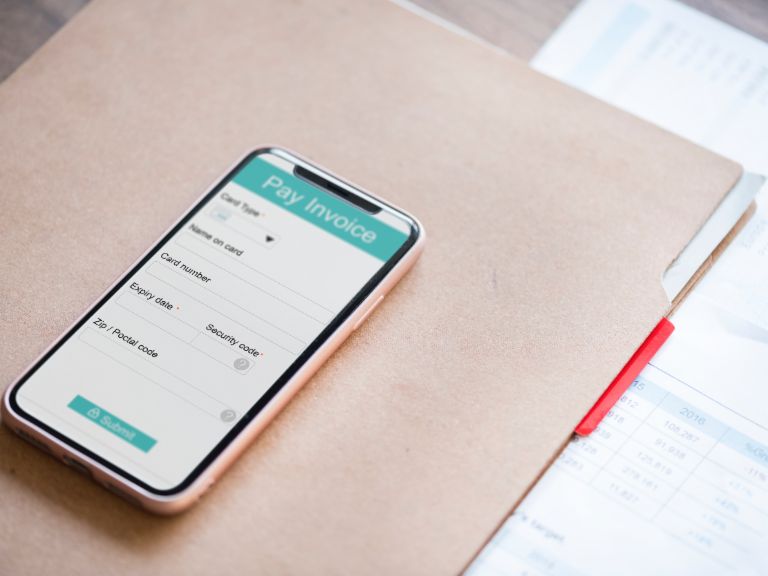Payments done the right way!
“How can we make sure that customers will pay our invoices promptly and reliably?” – This question is pondered by every company around the world. Their very existence can depend on the answer. After all, the method of payment is closely linked with the percentage of payment defaults, which is why companies are faced with a difficult decision in this area.
Advance payment, bank transfer, direct debit, eWallet, cash payment, or payment by installments: Most companies offer their customers a number of different payment options. According to the EOS study “European Payment Practices” 2018, bank transfer and purchase on account are the most widespread methods in Western and Eastern Europe at 82 and 64 percent, respectively, with advance payment in third place at 52 percent. In contrast, digital payment methods such as mobile payment or eWallet are still confined to the shadows in Europe. And cryptocurrencies are all but taboo: Only one percent of the companies surveyed offer Bitcoin and co.

Advance payment, bank transfer, direct debit, eWallet, cash payment, or payment by installments: Most companies offer their customers a number of different payment options. According to the EOS study “European Payment Practices” 2018, bank transfer and purchase on account are the most widespread methods in Western and Eastern Europe at 82 and 64 percent, respectively, with advance payment in third place at 52 percent. In contrast, digital payment methods such as mobile payment or eWallet are still confined to the shadows in Europe. And cryptocurrencies are all but taboo: Only one percent of the companies surveyed offer Bitcoin and co.
Digital payment – still not standard
Companies want to minimize the risk of payment defaults. Customers want payments to be as simple and straightforward as possible. According to a study, 36 percent of European companies confirm that there is a positive connection between digital payment methods and fewer payment defaults. Despite this fact, only 29 percent of companies are currently taking advantage of these options. According to the EOS study, this percentage will probably not be increasing any time soon either. The overwhelming majority of companies are not planning on offering any of the latest payment methods in the future. In contrast, only a few operations – just 12 percent in Germany – do not offer the popular purchase on account method despite the high risk of payment default. A few companies deliberately accept the drawbacks in order to fulfill the wishes of their clientèle, thereby enabling them to gain more customers and increase sales – albeit along with a greater risk potential. Russian companies are the big exception to this: Only 38 percent of companies in Russia offer this type of payment, preferring bank transfers and advance payments instead (81 and 76 percent, respectively). In general, Eastern European companies are somewhat more risk-averse than their Western European counterparts when it comes to purchase on account: 59 vs. 73 percent.

Avoiding the use of digital payment methods cannot be the ideal solution. New developments in payment services are being reported almost every day. Naturally, not every newly developed payment method will establish itself on the market over the long term. What is decisive is the acceptance of the users, which mainly depends on added value. An indiscriminate expansion of the payment options may also overtax customers, and it increases the time and expense needed by companies for implementation and supervision. (Source: Springer Professional) Just as with investment decisions, it is advisable for companies to spread out the risk through a broad payment mix. At the same time, this enables companies to cover the different requirements and preferences of their customers. For example, purchase on account automatically results in a longer term of payment. In contrast, payment by direct debit is regarded as particularly secure due to the cancellation option. And customers do not need to even disclose their bank information with e-payment procedures. (Source: Plakos)

From surveys, we know that digital channels are very important for our users
What about payment methods in the debt collection industry?
How does an industry operate when its core business involves payment processes? The analogy to companies is very evident: The goal is to make it as easy as possible for defaulting payers to make outstanding payments. Meeting the needs of the payers will make it easier for them to pay what they owe. “From surveys, we know that digital channels are very important for our users,” states Sören Sörries, Head of Portals at EOS Technology Solutions, summing up the experiences of one of the world’s largest debt collection services. “Our web-based service portal gives the option of paying in a way that is fast, anonymous, and straightforward.” At EOS in Germany, defaulting payers use a claim number to go directly to payment options, with a chat partner available to handle any questions. The most frequently used payment method here is the Sofort instant bank transfer. In Denmark, defaulting customers are offered the latest digital solutions directly at EOS, such as the use of NemID. EOS KSI in Romania relies on a large variety of options and collaborates with many service providers, such as Paypoint, Payzone, and Qiwi. The international perspective makes it particularly clear that the answer to the question of which payment method is ideal can only be: “It depends.”
Please contact us if you want to know more about the experiences of EOS or are having problems with payment defaults. We look forward to communicating with you.
